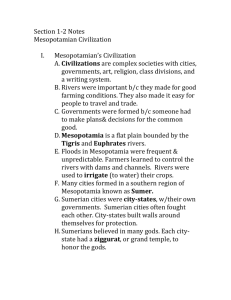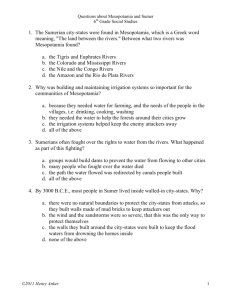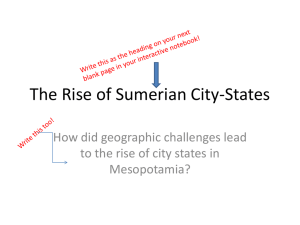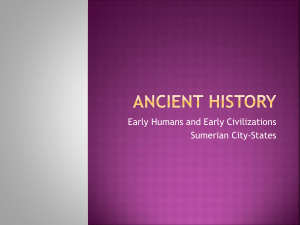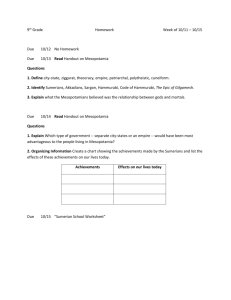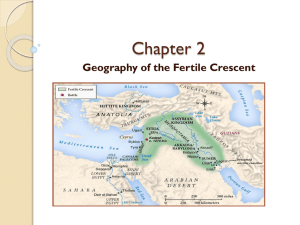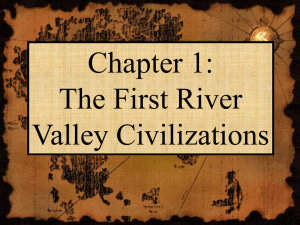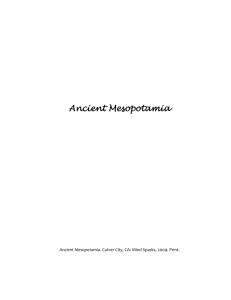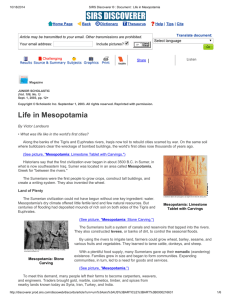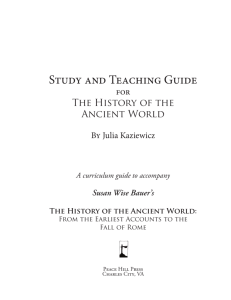History Alive! 6th Grade Chapter 4 Notes The Rise of Sumerian City
advertisement
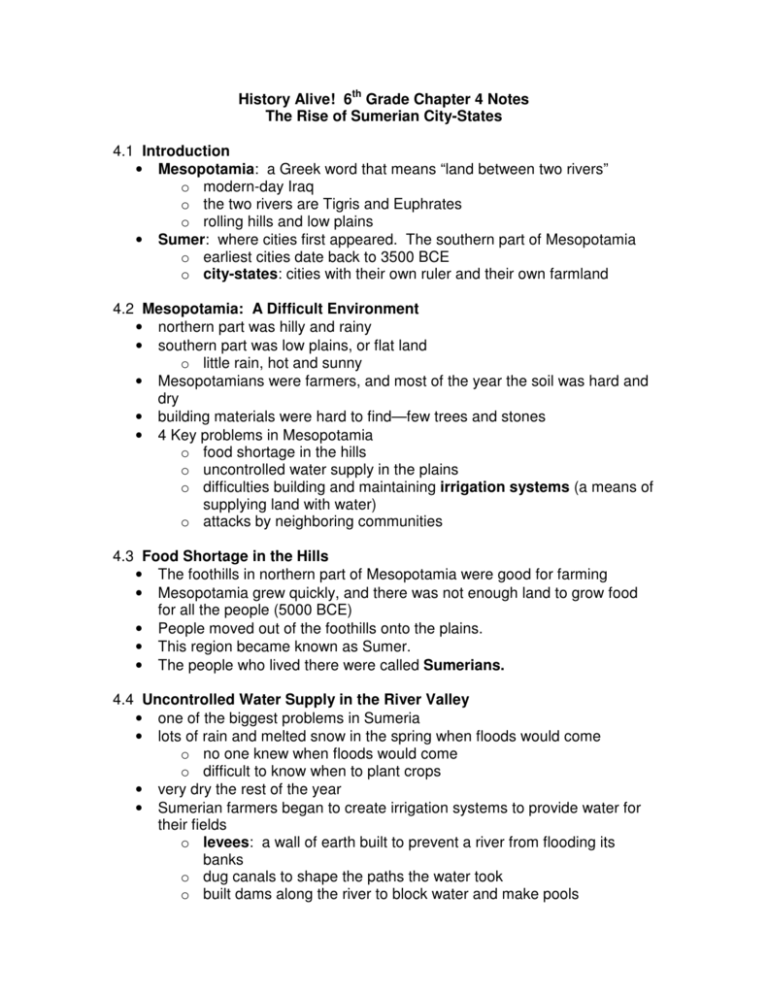
History Alive! 6th Grade Chapter 4 Notes The Rise of Sumerian City-States 4.1 Introduction • Mesopotamia: a Greek word that means “land between two rivers” o modern-day Iraq o the two rivers are Tigris and Euphrates o rolling hills and low plains • Sumer: where cities first appeared. The southern part of Mesopotamia o earliest cities date back to 3500 BCE o city-states: cities with their own ruler and their own farmland 4.2 Mesopotamia: A Difficult Environment • northern part was hilly and rainy • southern part was low plains, or flat land o little rain, hot and sunny • Mesopotamians were farmers, and most of the year the soil was hard and dry • building materials were hard to find—few trees and stones • 4 Key problems in Mesopotamia o food shortage in the hills o uncontrolled water supply in the plains o difficulties building and maintaining irrigation systems (a means of supplying land with water) o attacks by neighboring communities 4.3 Food Shortage in the Hills • The foothills in northern part of Mesopotamia were good for farming • Mesopotamia grew quickly, and there was not enough land to grow food for all the people (5000 BCE) • People moved out of the foothills onto the plains. • This region became known as Sumer. • The people who lived there were called Sumerians. 4.4 Uncontrolled Water Supply in the River Valley • one of the biggest problems in Sumeria • lots of rain and melted snow in the spring when floods would come o no one knew when floods would come o difficult to know when to plant crops • very dry the rest of the year • Sumerian farmers began to create irrigation systems to provide water for their fields o levees: a wall of earth built to prevent a river from flooding its banks o dug canals to shape the paths the water took o built dams along the river to block water and make pools o water was stored in reservoirs for later use 4.5 Difficulties in Building and Maintaining a Complex Irrigation System • irrigation systems passed through many villages as they carried water from the river to the fields. • workers from different villages worked together to maintain the irrigation system and keep it clean and running well • this led to the Sumerians creating larger communities between 3500 and 3000 BCE 4.6 Attacks by Neighboring Communities • Sumerian cities fought over the right to use more water • Sumerian cities had to protect their cities o strong walls were built around the cities o made of mud bricks o dug moats outside the city walls to prevent enemies from entering the cities o people lived inside the walls and farms were outside 4.6 From Small Farming Villages to Large City-States • The problems Sumerians faced led from small villages to large city-states o provide food for Sumerians o water supply o cooperation because irrigation systems crossed village boundaries o had to defend themselves

